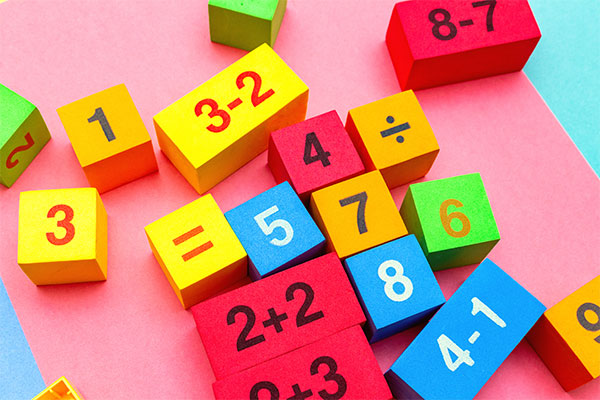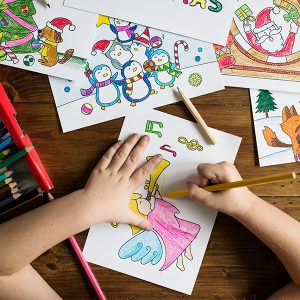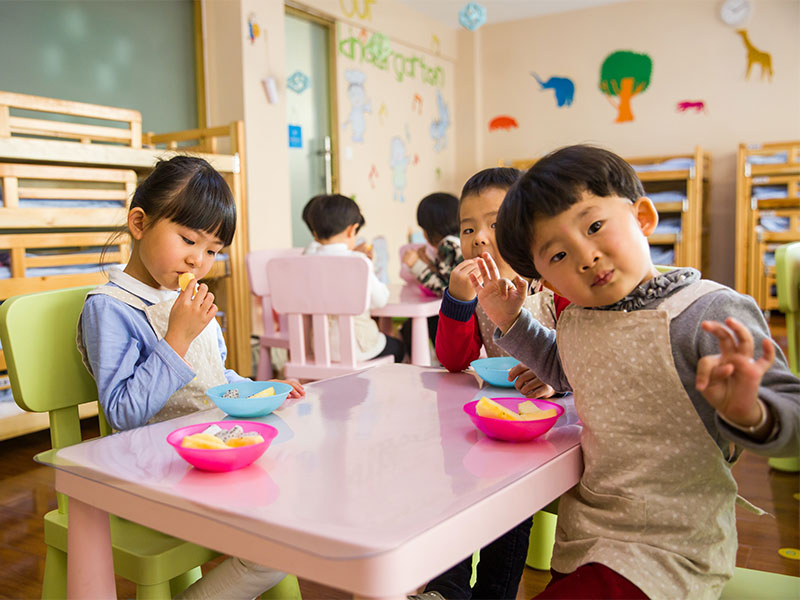The prevailing COVID-19 condition has shuttered many preschools across the nation. Parents need to implement a preschool curriculum or devise their preschool lesson strategies for their kids at home. Preschools may not have provided a curriculum to follow at home so that you may face creating one yourself. It might seem overwhelming to face the probability of building your homeschool preschool from the ground up but do not fear; we’re here for you. This blog will present you with some vital tips on several educational activities for preschoolers at home.
Some Beneficial Activities for Preschoolers at Home:
Activities to Improve Maths:

- Sum all of the yellow or any color things in your living room.
- Organize the groceries (by color, by food, etc.). Make a small chart of the groceries on the kitchen table.
- Go into your yard and find ten available natural items.
- Use rocks to make patterns.
- Play a self-made game of shape memory using index cards with shapes drawn on them.
“What is mathematics? It is only a systematic effort of solving puzzles posed by nature” – Shakuntala Devi
Activities to Improve Science:

- Go for a nature walk with your kid.
- Explore with your kid what happens when you mix water and dirt.
- Pour baking soda into a pan. Let the children drop vinegar from (or spoon onto the vinegar. Try coloring
- he vinegar or adding a scent with extracts. It would be a joyful activity.
- Freeze things in the water—some possibilities – flowers, LEGO mini figures, small toys, coins, etc. Then let the children experiment with different water temperatures to “rescue” what’s been frozen in ice.
- Host a taste test. Use foods you already have at home—some possibilities – chocolate, crackers, green foods, etc. Observe the foods with all five senses. How does it feel? Sound? Look? Smell? Taste?
- Maintain a simple science journal about all of your scientific adventures.
Visit: effects of parental criticism on kids
Activities to Improve Literacy:
- Combine literacy with everything you’re doing with the children! Science journals, composing about their beloved paintings, posting information about a graph of favorite apples, and so on.
- Express. And then talk some more. Everyday conversations that take place during your routine can have an enormous positive impact on communication development.
- Play a simple rhyming play using your Kid’s name. How many rhymes can you all makeup?
- Repeat stretching words slowly to discover all of the sounds.
- Create a name puzzle for your child. Write their name on a piece of paper and cut it apart. Apply that to work on alphabets and words.
- Sing!
Visit: principles of good parenting
Sensory Activities:
- Run trash paper through your shredder to build a paper bin. Add some scissors and let the children cut too.
- Add water to a sensory bin. Then put a bit of scented shampoo or soap in the water. Add whisks, bowls, funnels, etc.
- Put various materials into a big bin (small toys, beads, bells, paper clips – anything ). Add boxes that have tops. Let the kids place the materials into the boxes and explore sounds.
- Make a sensory bottle by adding pasta, paper clips, pompoms, etc., into an empty bottle. Seal shut before giving to kids.
“Art is a line around your thoughts.” – Gustav Klimt
 Activities to Improve Art:
Activities to Improve Art:
- Let the children use paper & markers to draw anything they wish. Ask them to create their magical creature and family drawing, use all the rainbow colors in one picture, etc.
- Hand the kids some chalk & let them at the sidewalk or driveway! To “spice up” this exercise, have the children see what happens when they draw with wet chalk.
- Use random things you have on-hand to create art – paper clips, cotton balls, leftover plastic Easter eggs, Post-It Notes, old CDs, etc.
- Take spare kitchen utensils, paint, & paper. Let the children paint using potato mashers, spatulas, whisks, & anything else in the kitchen. If you have washable ink, that will work well, too.
- Have the children create their jewelry with beads & string/yarn. If you don’t have any beads, consider cutting straws into smaller pieces or using buttons.
- Draw or write a hidden message with a white crayon on white paper. Have the children use watercolors to paint over the page & uncover the surprise.
Hope this article on activities for preschoolers at home benefits in your parenting for preschoolers!

